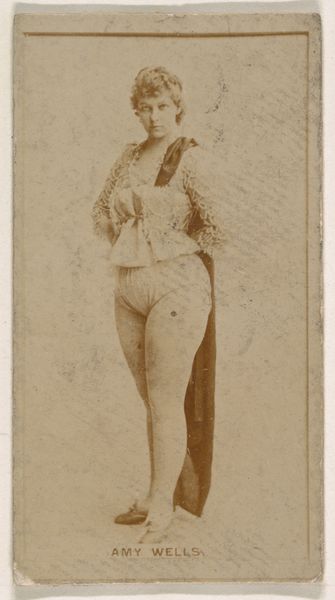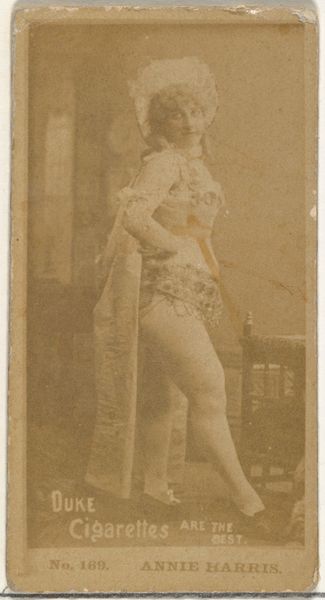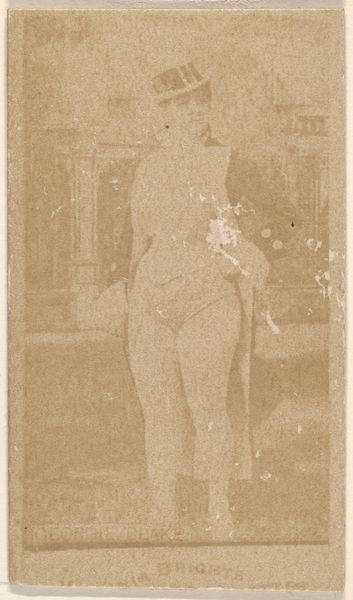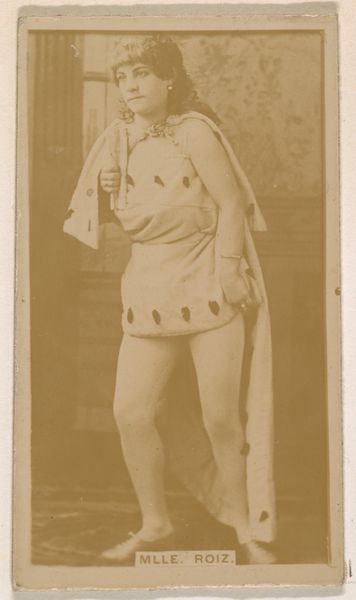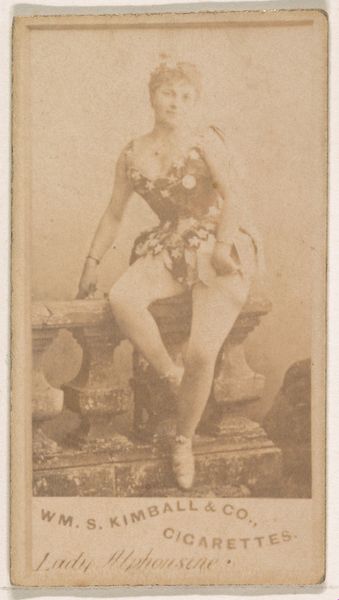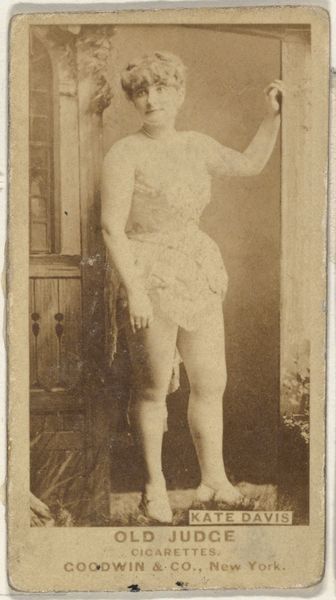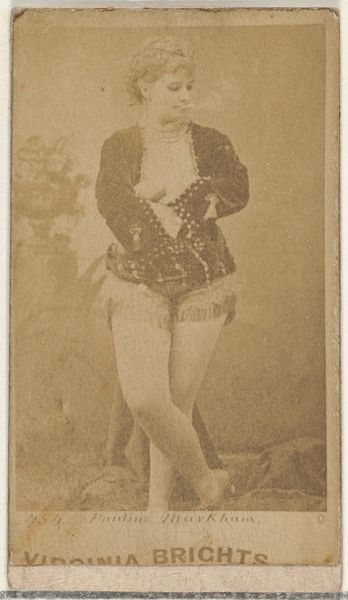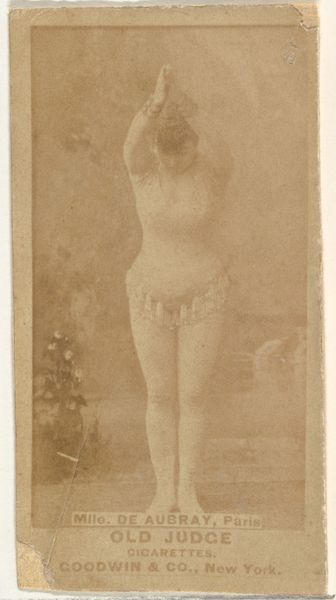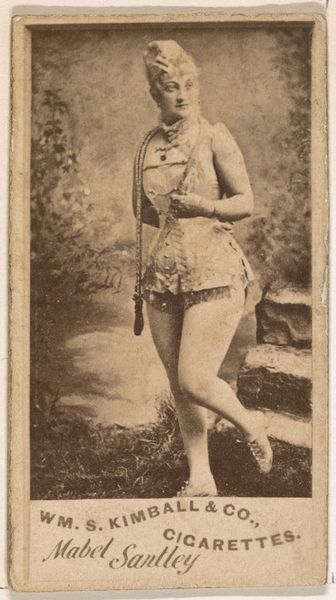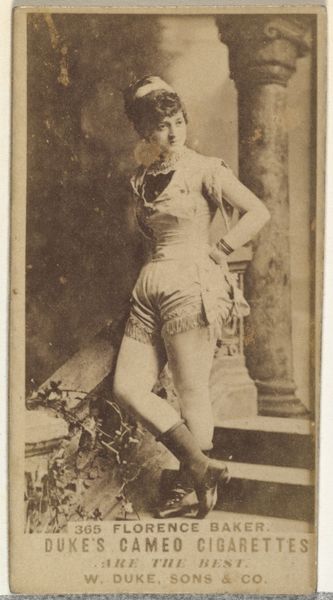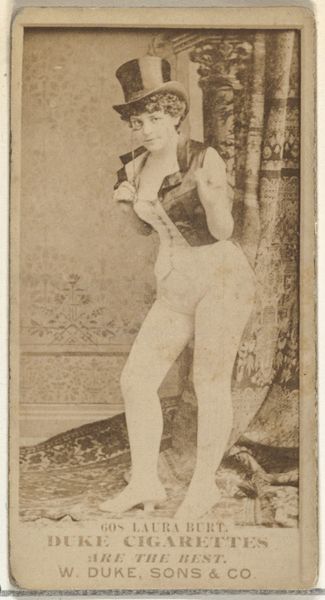
Card Number 360, Carrie Perkins, from the Actors and Actresses series (N145-7) issued by Duke Sons & Co. to promote Duke Cigarettes 1880s
0:00
0:00
print, photography, albumen-print
#
portrait
# print
#
photography
#
genre-painting
#
albumen-print
Dimensions: Sheet: 2 11/16 × 1 3/8 in. (6.8 × 3.5 cm)
Copyright: Public Domain
Curator: This albumen print, "Card Number 360, Carrie Perkins," produced by Duke Sons & Co. in the 1880s, presents a window into a complex past. Editor: It’s quite striking, the image of Carrie Perkins seems so staged and…almost like a fetishized version of a woman from that time? What do you see in this piece? Curator: I see the commercial exploitation of female figures, framed within the burgeoning consumer culture of the late 19th century. Tobacco cards were essentially trading cards, and the inclusion of actresses like Perkins speaks volumes. The male gaze is at play, positioning women as objects of desire to boost cigarette sales. How might we deconstruct this further through the lens of power dynamics? Editor: It’s unsettling to think about how something as simple as a cigarette card played a role in objectifying women. Did Perkins have agency in how she was presented, or was she simply a pawn? Curator: Exactly. This is the critical question. We have to ask: who benefits from this representation? The company, certainly, and a predominantly male consumer base. What about Perkins herself? Was this a path to visibility, even if exploitative? This intersection of gender, class, and the spectacle is ripe for interrogation. Also, it looks like the card, or image has damage on the top, almost like someone purposely removed it. Editor: It sounds like reading this image isn’t just about appreciating an old photograph; it’s about unpacking a whole system of social and economic relationships. This makes me think about how marketing still relies on these tropes today, but in new and often insidious ways. Curator: Precisely. By examining these historical examples, we can better recognize and critique the persistent issues of representation and exploitation that continue to shape our contemporary visual culture. So we can ask how the "show" impacts representation, visibility, agency, class and so many additional factors? Editor: This has really changed how I see the image - from a simple albumen print to a commentary on the history of exploitation in advertising and the power of the image. Curator: And understanding the historical context is crucial to decipher its cultural meanings. It gives us the opportunity to critique existing harmful structures that might be embedded in the image.
Comments
No comments
Be the first to comment and join the conversation on the ultimate creative platform.
